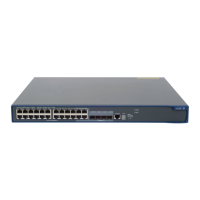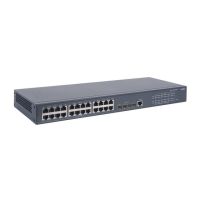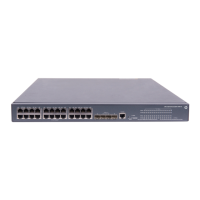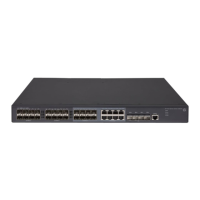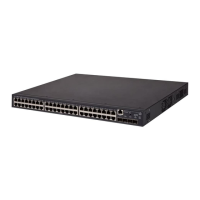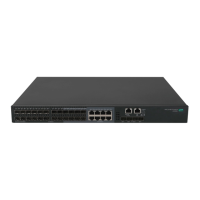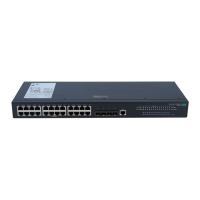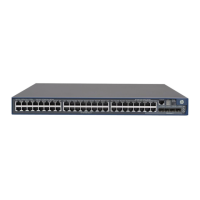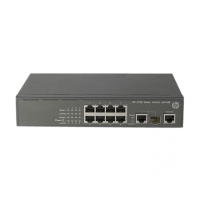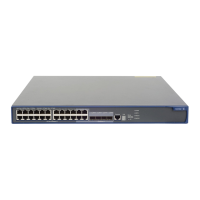178
• On a port with QinQ enabled, you must configure the port to allow packets from the inner and
outer VLANs of QinQ packets to pass through.
Complete the follows tasks to configure QinQ:
Task Remarks
Configuring basic QinQ
Enabling basic QinQ Required
Configuring VLAN transparent transmission Optional
Configuring selective QinQ
Configuring an outer VLAN tagging policy
Required
Perform
at least one of
these tasks.
Configuring an inner-outer VLAN 802.1p priority
mapping
Configuring the TPID value in VLAN tags Optional
Configuring basic QinQ
Enabling basic QinQ
A basic QinQ-enabled port tags an incoming packet with its PVID tag.
To enable basic QinQ:
Ste
Command Remarks
1. Enter system view.
system-view
N/A
2. Enter interface
view or port group
view.
• Enter Layer 2 Ethernet interface view or Layer 2
aggregate interface view:
interface interface-type interface-number
• Enter port group view:
port-group manual port-group-name
Use either command.
3. Enable basic
QinQ.
qinq enable Disabled by default.
Configuring VLAN transparent transmission
When basic QinQ is enabled on a port, all packets passing through the port are tagged with the port's
PVID tag. However, by configuring the VLAN transparent transmission function on a port, you can specify
the port not to add its PVID tag to packets carrying specific inner VLAN tags when they pass through it,
so that these packets are transmitted in the service provider network with single tags.
Configuration restrictions and guidelines
When you are configuring transparent transmission for a VLAN, you must configure all the devices on the
transmission path to permit packets of this VLAN to pass through.
Configuration procedure
To configure VLAN transparent transmission:
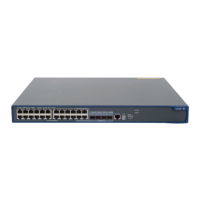
